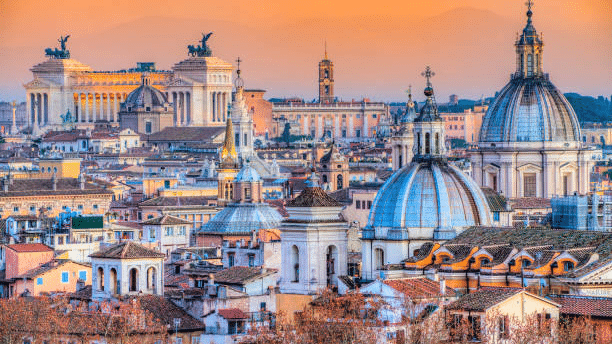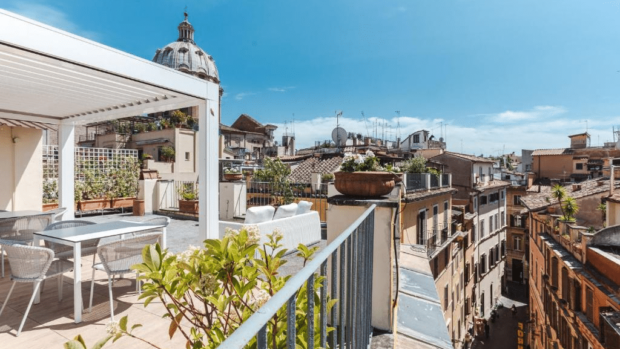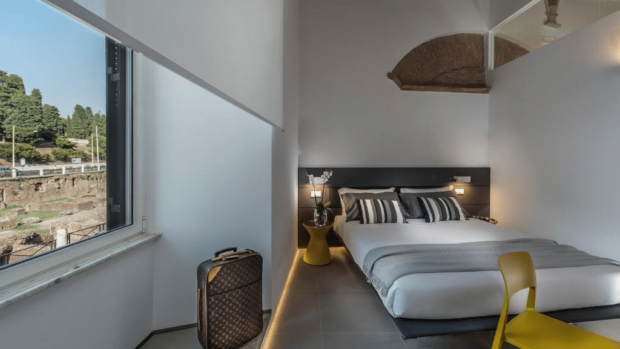Welcome to our Top guide to Rome for your city break. More importantly, we will gladly give you the finest travel tips for visiting the attractions in Rome.
Introducing the city
Rome (or Roma) is the capital of Italy, with a population of 2.8 million. According to legend, the twins Romulus and Remus founded the city in 753 BCE on the banks of the river Tiber.
The city of Rome is one giant museum. Furthermore, it lies on top of seven hills; Palatine Hill, Aventine Hill, Capitoline Hill, Caelian Hill, Esquiline Hill, Quirinal Hill, and Viminal Hill. Especially the area around Palatine Hill and Capitoline Hill would later become the center of the enormous Roman Empire. Rome’s cityscape is a compelling sight due to 3000 years of urban development. Ancient icons such as the Colosseum, Roman Forum, and Pantheon recall the city’s golden age as Caput Mundi (capital of the world). At the same time, monumental basilicas tell of its history as the seat of the Catholic Church. Lording it over the skyline, St Peter’s Basilica towers over the Vatican, testifying to the ambition of Rome’s Renaissance popes and the genius of its game-changing architects. Elsewhere, ornate piazzas and showy fountains add a baroque flourish to the city’s beautiful streets.
Therefore, it is no surprise that the complete historic city center is on the UNESCO World Heritage List.
Top Rome’s attractions
In its long history, Rome has accumulated numerous attractions. Therefore it is impossible to name all in one short tourist guide. So, we invite you to see the photo gallery below to see Rome’s major attractions.
Note: If you want to see more, visit our related article about Top attractions in Rome.
Our website includes affiliate links. So, keep in mind that we may receive commissions when you click our links and make purchases. Please read our legal disclaimer document for more information about our Affiliate disclaimer and other disclaimers like Fair-Use disclaimer, etc.
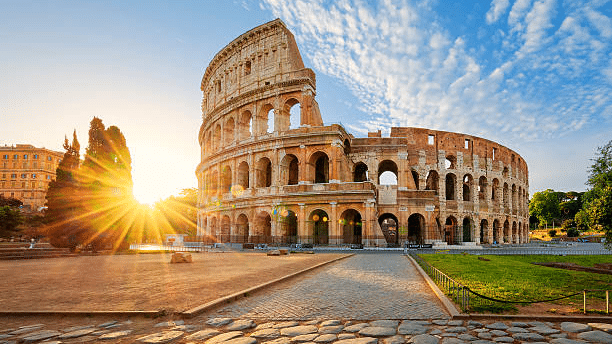
Colosseum, ©Istock.com/vwalakte
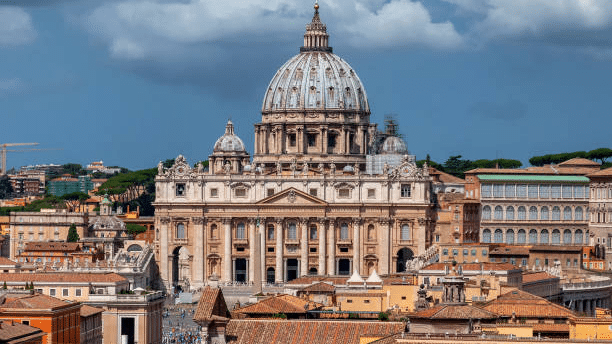
St. Peter’s basilica in Vatican, ©Istock.com/FotoGablitz
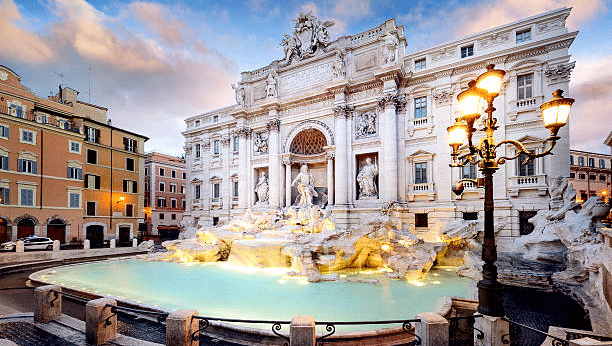
Fontana di Trevi, ©Istock.com/ventdusud
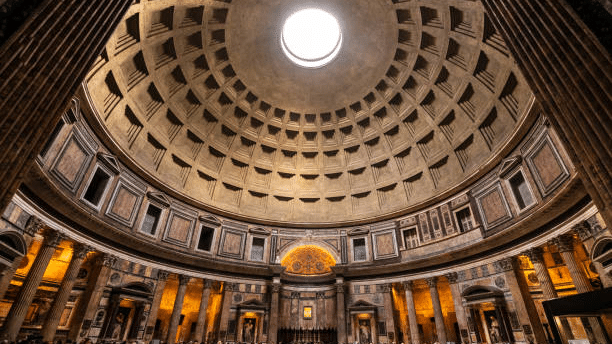
Pantheon, ©Istock.com/Kemter
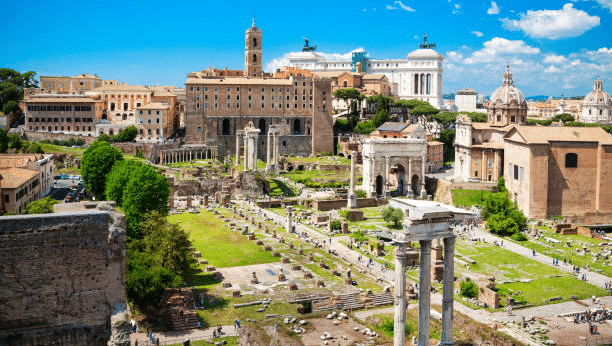
Ruins of Forum Romanum, ©Istock.com/Gosiek-B
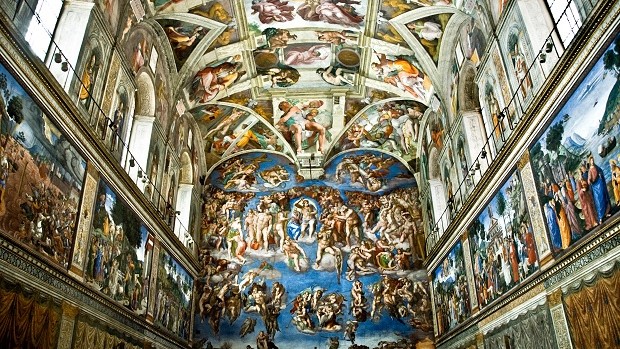
©cntraveler.com
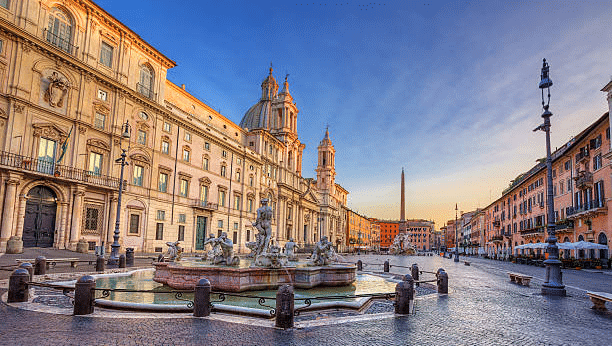
Piazza Navona, ©Istock.com/phant
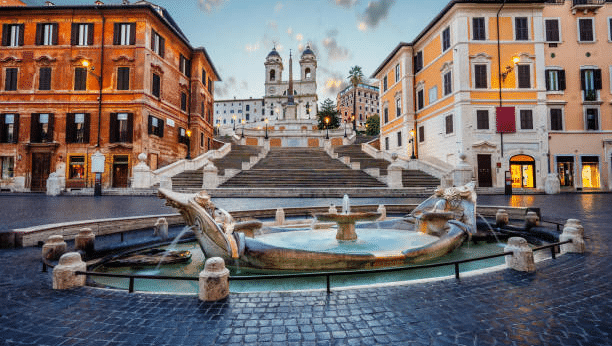
Spanish steps, ©Istock.com/FilippoBacci
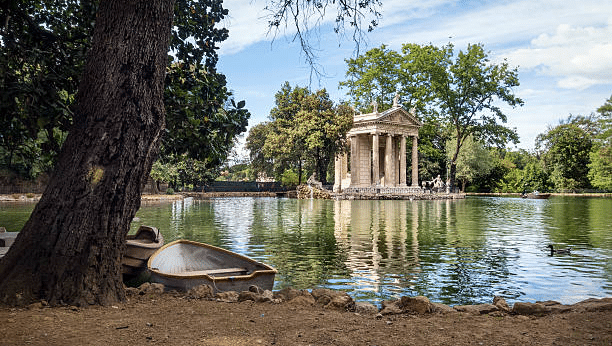
Villa Borghese, ©Istock.com/ROMAOSLO
Best time to visit Rome
Firstly, Rome has a Mediterranean climate with mild winters and warm or hot summers. More importantly, with 2,500 hours of sun every year, the odds are good to find sunny weather. And lastly, you can visit Rome in Italy throughout the year, but the best time for the visit is spring or autumn, especially if you want to travel on a budget.
How to get to Rome
By plane
Rome has two international airports, with over 40 million passengers every year.
Traveling from the U.S.
Visitors from the United States will find direct flights to Rome from New York, Philadelphia, Atlanta, Boston, Chicago, Miami, Los Angeles, and Washington, D.C.
Traveling from Europe
If you live in Europe, visiting the Italian capital for less than €50 is now possible. The leading low-cost airlines flying to Rome are Vueling, Ryanair, Wizzair, Easyjet
Flight search engine: Find and compare cheap flights online.
Once you have your ticket and know which airport you will land in, find out how to get to the center of Rome from Leonardo da Vinci Airport or Ciampino Airport.
Train
The train is an excellent choice if you plan to discover Italy and visit other cities. The high-speed trains connect Rome and Florence in over an hour and a half to Milan in three hours. Different categories of trains connect Rome with most cities in the country but are slower.
Additionally, if you’re touring Europe and would like to get to Rome by train, the easiest option is to get to Milan and, from there, take a train to Milan. Ultimately, you can always check schedules and fares on the Ferrovie dello Stato website.
Bus
Check out the Omio site if you want to travel by bus. However, you will probably find the train option more affordable. You can also buy a ticket here.
Public transport in Rome
Rome offers a vast array of public transport like all the big cities. But, of all the means of public transport, we recommend the metro the most.
The Metro of Rome only has three lines and is currently a minor metro system in Europe. Nevertheless, it reaches the city’s most important landmarks. More importantly, it has stops at every major attraction in the town (from Piazza di Spagna and Colosseum to St. Peter’s Basilica).
Where to get a ticket?
You can purchase tickets at the metro stations, newsstands, and most corner shops. We recommend buying a travel card if you plan to use public transport regularly.
And lastly, you can also use buses, taxis or even rent a car. However, we still recommend the metro because it is the most convenient way to travel inside the city. If you are one day visitor, you could also consider Hop-on Hop-off Bus Rome.
Money-saving tips for Rome
Besides booking your flight and hotel in advance, there are many other ways to save money in Rome. The primary way to do this is to reduce the cost of admission tickets to the city’s museums and top attractions. Besides well-known Hop-on-Hop-off busses, there are many tours available in the city. So, choose your most valuable. It all depends on your interests and the time. If you spend only a day or two, perhaps you should consider buying separate tickets, but if you spend more than four days, you should consider one of the passes.
City passes
We present you with some excellent choices on the widgets below to skip the long lines, move freely around the city, and reduce considerable stress. We also recommend them to all who stay there four days or longer, except the Hop-oh-Hop-off bus. Ultimately, this option is for everybody. It is convenient indeed!
Bestselling tickets for some of the city’s main attractions.
Where to stay in Rome
Are you looking for a hotel in Rome? Yes? Great!
Over there, many accommodations are in the city center. Therefore, they are an excellent choice for travelers to visit most of Rome’s top attractions, museums, and monuments.
If you don’t mind spending more on accommodation, we recommend looking for lodging near the Trevi Fountain, the Piazza Navona, and the Pantheon. Other areas which are also very central include Piazza di Spagna, Piazza Barberini, la Via del Corso, and its adjacent streets.
If you don’t want to spend too much on lodging, we recommend looking for cheaper hotels near Termini Railway Station. Furthermore, this area is well connected with metro lines stopping at Termini, and the central bus station is just in front of the railway station.
Click here – if you want to find out some excellent deals.
What and where to eat
Roman cuisine
Italian restaurants in Rome will have a selection of mouth-watering dishes, from colorful salads to tasty meat recipes and fish platters; nevertheless, if you are too impatient to wait to get to Rome to discover some of the city-best dishes.
Neighborhoods
Although the city is full of restaurants and takeaways, some of the best places to eat in Rome are the streets surrounding the Trastevere, packed with traditional Italian restaurants, Piazza Navona, Campo dei Fiori, or the Pantheon. The roads in these areas have charming, authentic restaurants with terraces to enjoy a tasty meal while watching the people.
Note: If you want to learn more about what to eat in Rome, check out our article.

A plate of Fettuccine Carbonara, ©robynmac

Saltimbocca alla romana, ©psychoschlumpf
Best one-day trips
If you have enough of Rome or want to discover more, you can check out some of the most popular one-day tours from the city. Furthermore, we highly recommend the first two. However, the third and the fourth are only for those who flew from a faraway country and will not likely visit Italy anytime soon. Namely, Naples, together with its surroundings (Capri, Amalfi coast, Sorrento), should be the destination in its own right. You’ll see when we will cover this part of Italy quickly. There is so much to do and to see there.
Stay Safe in Rome
Overall, locals tell us that Rome is a safe place to visit. It is one of the safest Italian cities to visit—with a lower rate of theft complaints than Milan, Bologna, and Florence.
But Rome is a big city. And it’s a well-known tourist destination, which means visitors should take certain precautions. Locals recommend:
- Stay aware of your surroundings: Watch out for pickpockets—especially in crowded places like train stations or top tourist attractions like the Colosseum.
- Keep an eye on your belongings: Don’t leave your phone or wallet in your back pocket. That’s why considering investing in a crossbody purse is good.
Coronavirus Update: Please note that some venues may be closed in line with local government advice. Stay safe and follow the local authority’s guidance to minimize the risk of virus transmission. Please check the venue’s website for the latest opening hours and information before making your journey. Ultimately, you can check the Skyscanner site for the latest COVID-19 travel updates and restrictions
Top guide to Rome – final thoughts
The first and the final question to answer is: Is Rome worth a visit? And our answer is: definitely yes!
In the end, we are inviting you to a discussion. We would namely like to hear your experiences and pieces of advice in the comments below.
Note: If you are planning your first stay in the city, we recommend reading our related article about Rome for the first-timers.
Read also

Top yummy things to try in Rome
The article about the Top yummy things to try in Rome will show you what to eat when visiting Rome and where to eat. We
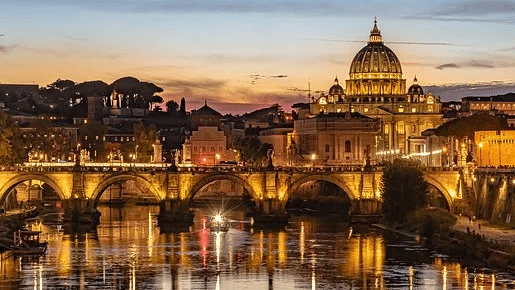
Top attractions and things to do in Rome
This article will introduce you to the top tourist attraction in Rome, And of course, all the must-see sights every visitor should see when they

How to skip the line at the Sistine Chapel
Why have we decided to write about “How to skip the line at the Sistine Chapel”? Namely, on a busy day in Rome, more than
References and sources:
Photo credits:
Featured photo: @MasterLu

